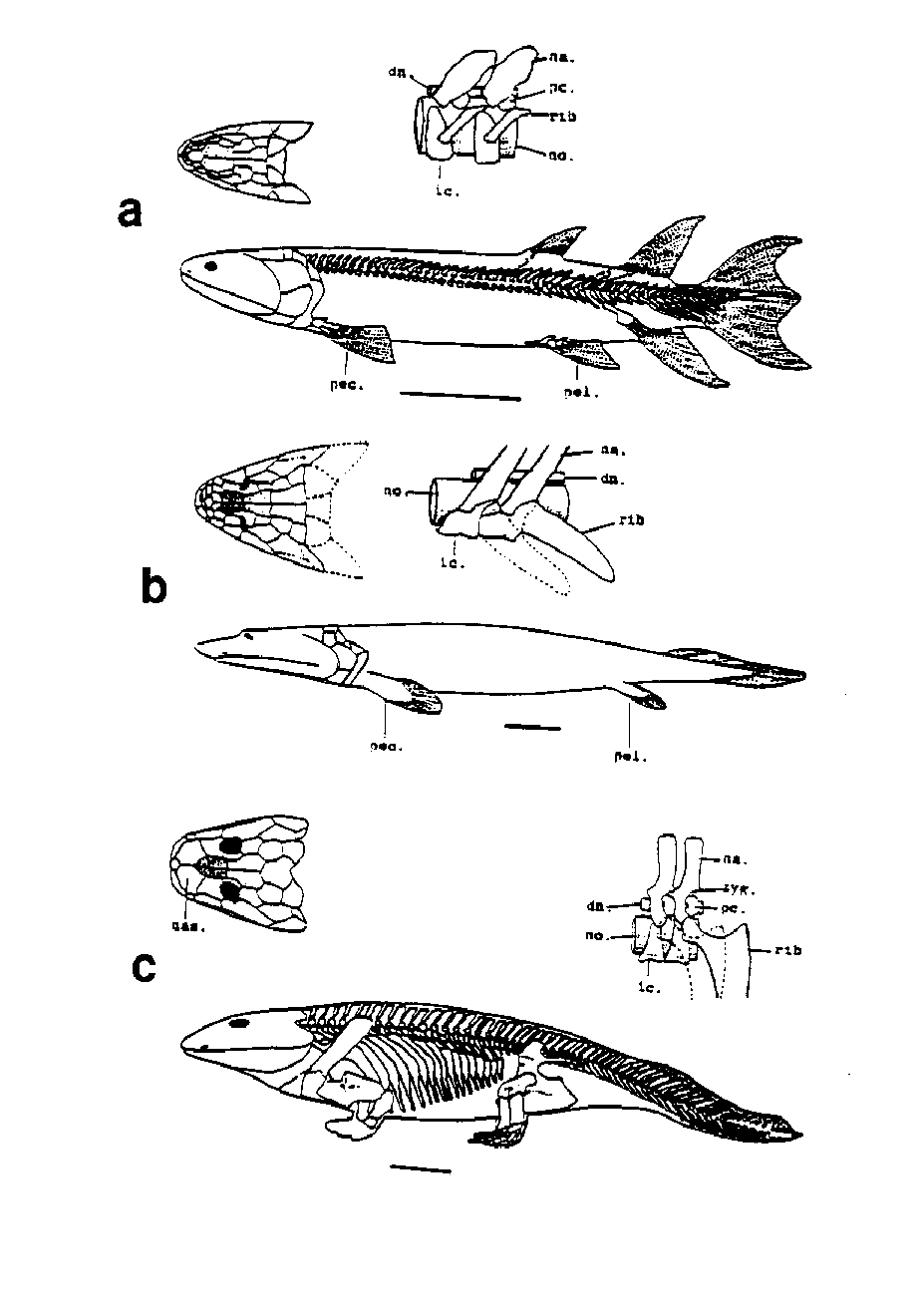Where is the fish that became the frog?
I'm just going to do this one for amusement, and I swear up front I'm not going to take it to any ridiculous depth. From a source that has been linked to these threads many, many times:
That's the For Dummies version, but it is enough to demonstrate the silly emptiness of "Where is the fish that turned into the frog?" More up-to-date and detailed info is here. Or maybe Fins to Legs (slide show) is more your level.The transition from water to land was one of the most significant events in animal evolution. Recent paleontological and systematic work has shed new light on this transition (Fig. 14). The most primitive amphibian yet known is the late Devonian Ichthyostega, a tetrapod with a flattened skull and bearing a tail fin. The limbs were until recently poorly known, but new fossil evidence has come to light. The hand, previously unknown, shows that these amphibians possessed seven to eight digits. The limbs also had a very limited range of movement and the animal was not as well adapted to terrestrial locomotion as previously thought (Ahlberg & Milner, 1994). The rhipidistian fishes are widely considered to have given rise to the amphibians. One small group of late Devonian rhipidistians, the panderichthyids, appears to be closely related to the ichthyostegids (Schultze, 1991). These fishes have flattened skulls very similar to that of the early amphibians. In addition, the anal and dorsal fins are absent, and the tail is very similar to that of Ichthyostega (Vorobyeva & Schultze, 1991). The lobed pectoral and pelvic fins have bones that homologize with the limb bones of the tetrapods. Whether part of a single direct lineage or not, ichthyostegid amphibians and panderichthyid fishes are clearly transitional forms between class level taxa. The first known skull of a panderichthyid was in fact initially considered to be an amphibian (Vorobyeva & Schultze, 1991), again illustrating the taxonomic problems encountered during the appearance and early radiation of a new taxon.
Figure 14. The transition from fish to amphibian illustrated by body form and skeletons, with details of skulls and vertebrae. (A) Osteolepiform fish Eusthenopteron; (B) panderichthyid fish Panderichthys; and (C) labyrinthodont amphibian Ichthyostega. (From Ahlberg & Milner [1994], reprinted with permission from Nature, copyright © 1994 Macmillan Magazines Limited, and from Per Ahlberg.)
Overall, there's a mountain of evidence for evolution: 29 Evidences for Macroevolution.
